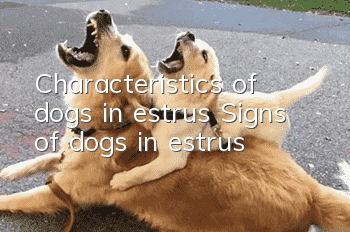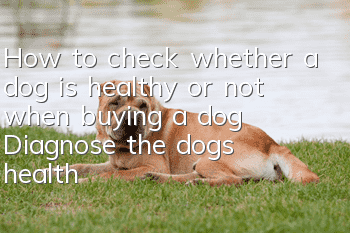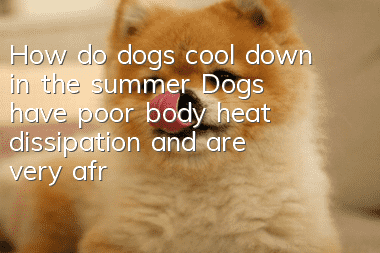Characteristics of dogs in estrus Signs of dogs in estrus

Puberty period
Dogs can reach the period of puberty when they are 8-12 months old. However, due to the large differences in breeds, some dogs with smaller bodies have a period of puberty earlier than those with larger bodies. Morning doggy.
Estrus season
Female dogs are seasonal single-estrus animals, usually in March and May in spring or September and November in autumn. Dogs with good breeding conditions will not have obvious estrus during the season. Some dogs go into heat 2-3 times a year.
Estrus
The estrus of a female dog is divided into 4 periods, namely proestrus, estrus, interestrus and postestrus.
1. Proestrus: the period from the discharge of bloody mucus from the vagina of the female dog to the time when the male dog can crawl on and mate. The period of proestrus can last from 3 to 16 days, with an average of 9 days. During this period, the female dog is excited but does not accept mating. The external genitalia are swollen and the ovaries have follicle development.
2. Estrus period: It is the period for the female dog to accept climbing. The estrus period of the female dog is usually 4-12 days, usually 9-12 days. The first time a female dog is mated by a male dog is the beginning of estrus. It is important to determine when estrus begins because ovulation occurs within a short period of time after estrus.
3. Estrus interval: the period from the end of estrus to the recovery of normal reproductive organs. Female dogs have a longer estrus period because the corpus luteum function of non-pregnant dogs can last for about 75 days after ovulation.
4. Post-estrus: The female dog’s genitals are in a static state, lasting 50-60 days. For dogs that only go into estrus once a year, this period lasts for nearly a year.
In every complete estrus period of a female dog, the uterus is in an environment dominated by progesterone for a long time, which can cause excessive endometrial proliferation and cystic changes, and can also easily cause infection. This phenomenon is more common in older dogs.
- Why is Teddy losing hair? What is the cause of Teddy dog losing hair?
- The dangers of dog obesity. Obese dogs are less likely to live longer.
- What should you do if your dog loves to tear up the house? Your dog may have separation anxiety.
- Training your dog not to bite randomly - Notes on raising a good dog
- What should I do if my Tibetan Mastiff doesn’t eat? I’ll teach you how to change it if your Tibetan Mastiff doesn’t eat.
- What to do if your dog doesn’t like wearing a collar? There are ways to wear a collar
- Can rabies be prevented? Rabies prevention and control technical guide
- The best age for golden retriever training to make your golden retriever a good baby
- Is it okay for dogs to eat leftovers? What are the effects of feeding leftovers to dogs?
- What do different dog postures mean? Understand the meaning behind the postures



